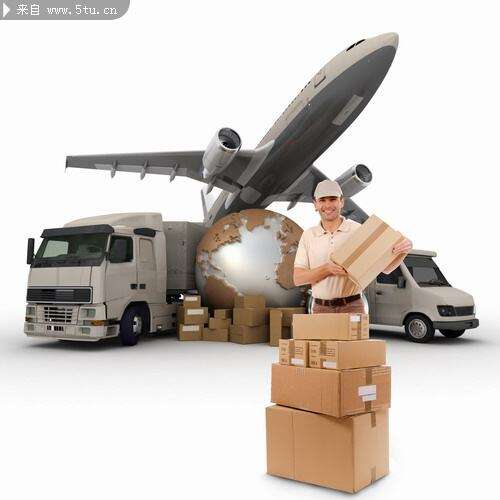Netherlands tollinės kontrolės importas eksportas
1. Pirma, keletas terminų:
EORI = Ekonominių veikėjų registracijos ir identifikavimo numeris, kuris yra unikalus identifikavimo kodas, naudojamas ES tariamuoju, kad užfiksuotų, sekėtų ir apskaičiuotų importo ir eksporto informaciją.
PVM = Pridėtinės vertės mokestis
DT = Tiesioginis atstovavimas
NET = Netiesioginis atstovavimas
APD = Ribotas finansinio atstovavimo modelis
BPD = Bendra finansinio atstovavimo modelis
IVV = Bendruomeninės teritorijos vykdymas (ES) bendruomeninė (PVM) circuliacijos pranešimas
2. Kai prekės iš Kinijos atvyksta į Niderlandus oro, jūros ar geležinkelio keliais, Niderlandų tariamojo pradeda importas eksportas turi tris galimybes:
1. Olandijos krovinių perdavimo agentas tiesiogiai organizuoja vietinį tariamąjį kontrolę, o vėliau visą siuntinį tiesiogiai pateikia į giminio pelnytojo numatytą sandėlį. Šis metodas yra mažai naudojamas oro transportui, bet daugiau naudojamas jūrų transportui. Jis tinka visam skryniąi patekti į užsienio sandėlį netoli Olandijos.
2. Olandijos krovinių perdavimo agentas pirmiausia iškelia krovinius į savo nemokąjį sandėlį, o vėliau vienu metu organizuoja viso sandorio tariamąją kontrolę ir paskutinę tiekimo procedūrą. Šis metodas taikomas visam krovinio partijai patekti į platformos tiekimo centro sandėlį arba į užsienio sandėlį toli nuo Olandijos.
3. Po to, kai olandų prekiautojas išveža prekes į sauliojamojo sandėlio, jis organizuos daugelį partijų panašinimo ir pristatymo pagal kliento pristatymo reikalavimus. Šis metodas taikomas prekėms, siunčiamoms verslo pirkėjams, bei prekėms, siunčiamoms į kelias platformas pristatymo centrus.
3. Kas deklaruos Olandijoje?
Trys galimybės:
1. Vietinis olandų prekiautojas turi savo panašinimo skyrių
2. Panašinimo brokeriai, bendradarbiaujantys su vietiniais olandų prekiautojais
3. Olandijos vietinis panašinimo brokeris, nustatytas savininku
4. Panašinimo brokeris gali teikti šias panašinimo paslaugas:
1. Panašinimo brokeris tiesiogiai deklaruoja savininko prekes kaip savo prekes.
Panašinimo agentūros kodas 1, panašinimo brokeris yra visiškai atsakingas už panašinimo rezultatus
2. Tiesioginis panašinimo agentūros veiksmas taikomas tik prekių savininkams, turintiems fiksuotus registracijos įmones JAV.
Krovos savininkas turi galiojantį EORI ir PVM numerį ir pasirašo DR sutartį su mokesčių agentu. Mokesčių agentas atlieka mokesčių deklaraciją vardu savininko JBT įmonės, naudojant mokesčių registravimo kodą 2. Importuotojas, užfiksuotas mokesčių tarnyboje, yra krovos savininko JBT įmonė, o savininkas visiškai atsakingas už mokesčių deklaracijos rezultatus.
3. Tarpinis agentūros mokesčių deklaravimas taikomas krovos savininkui, kuris nerėgistravo įmonės jokioje JBT šalyje.
Krovos savininkas pasirašo IDR sutartį su mokesčių agentu. Mokesčių agentas atlieka mokesčių deklaraciją vardu krovos savininko, bet savo vardu. Mokesčių registravimo kodas yra 3. Importuotojas, užfiksuotas mokesčių tarnyboje, yra krovos savininkas. Mokesčių agentas ir krovos savininkas bendrai atsakingi už mokesčių deklaracijos rezultatus.
a) Savininkas pats yra gavėjas ir turi Olandijos kontinentinę mokesčių nuostolių numerį: žingsniai yra tie patys kaip 1. b) tiesioginio agento skyriuje.
b) Savininkas pats yra gavėjas ir turi vieną ar daugiau galiojančių jūrų mokesčių numerių iš ES šalių, kurios yra už Nyderlandų: veiksmai yra tie patys, kaip ir 1. c) daliesje tiesioginio agento atveju.
c) ES įmonė, kuri yra savininko pirkėja, yra gavėja ir turi galiojančią mokestinių numerį: carinio brokeris naudos LFR metodą, kad praneštų už savininką, o savininkas turės papildomai pasirašyti LFR sutartį su carinio brokerio.

 EN
EN
 AR
AR
 BG
BG
 HR
HR
 CS
CS
 DA
DA
 NL
NL
 FI
FI
 FR
FR
 DE
DE
 EL
EL
 HI
HI
 IT
IT
 KO
KO
 NO
NO
 PL
PL
 PT
PT
 RO
RO
 RU
RU
 ES
ES
 SV
SV
 TL
TL
 ID
ID
 LT
LT
 SR
SR
 SK
SK
 SL
SL
 VI
VI
 ET
ET
 HU
HU
 MT
MT
 TH
TH
 TR
TR
 FA
FA
 AF
AF
 MS
MS
 GA
GA
 KA
KA
 LA
LA
 MY
MY

















